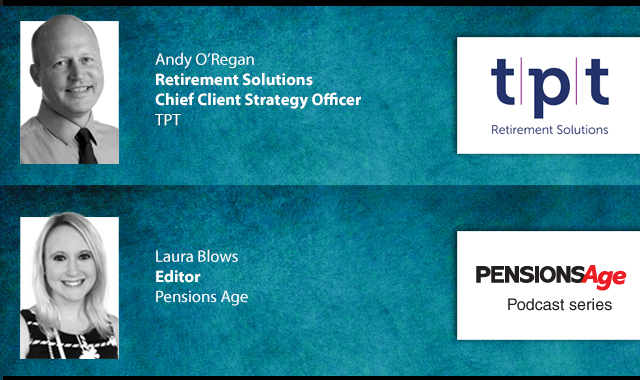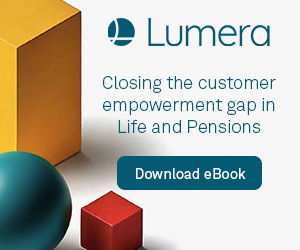The term ‘alternatives’ used to suggest unconventionality – investment solutions that break away from the mainstream. However, with such a myriad of alternative asset classes becoming available and attractive to investors, there’s often a debate about whether these investments can actually be considered ‘alternative’ any more.
Traditionally, most pension fund portfolios consisted of 60 per cent equities and 40 per cent bonds and it would be unusual to see anything different. However, more pension funds are now looking towards investments that aim to provide diversification from these traditional asset classes, such as private equity, hedge funds and property.
Franklin Templeton Investments says correlation, or the lack of it, is often cited as a measure of how alternative an investment is, but the firm believes correlation is “too linear to measure”. Instead, “what really matters is how an investment performs in up and down markets, respectively”, says head of alternative sales Peter Vincent.
“One of the many interesting things about alternatives, and why it is so hard to generalise, is that some can be thought of as yield-seeking, and others as growth strategies. As such an allocation to alternatives can derive from either the traditional portfolio’s fixed income or equity allocation,” he continues.
When the financial crisis hit in 2008, it forced pension funds to reassess exactly where they could find returns for their investments. Research conducted last year by Towers Watson suggested that even before then, investors were seeking alternative asset allocations.
Fast-forward to today and as the shift from defined benefit to defined contribution pension schemes continues, so does the increase of allocations to alternatives by a DC scheme. Additionally, in a low yield environment and with schemes under-funded, alternative strategies are looking more and more attractive to DB funds wanting to generate yield and ultimately lower their deficits.
Alternative choices
BlackRock head of intermediated institutional business, Andrew Stephens, says the firm’s latest asset allocation survey at the start of the year suggested 49 per cent of institutional investors globally were intending to increase allocations to property, 43 per cent intended to increase allocations to real assets like infrastructure, and some 28 per cent to increase allocations to hedge funds.
Stephens suggests that whilst yields have been so low, demand for these asset classes has increased because they “encourage pension funds to focus on the need for secure income, providing a higher but significantly safe yield compared to gilts”.
M&G alternative credit client director Jo Waldron says we are now seeing “an emerging middle ground of alternative investment”.
“With gilt values as low as they are, areas that can provide excess returns without the same volatility as hedge funds – such as alternative credit areas – are helpful for funds to claw back a little bit of the deficit against the low gilt return,” she explains.
One asset class showing a soaring demand is property. There has been a debate as to whether property can actually be considered part of the ‘alternatives’ party at all, as according to BlackRock, some 49 per cent of investors are keen to invest in it.
Stephens says the reason why property causes some confusion is although it is not a stock, bond or cash, investment in real estate goes all the way back to the beginning of property laws, meaning it isn’t quite as new to the scene as other alternatives. Another reason it could be considered an asset class of its own is property itself consists of a plethora of sub-asset classes.
One main example of this is social housing. Many investment managers are looking at leasing and lending in order to produce long-term returns. In the UK, 18 per cent of housing is social housing and historically, the government used to finance that through grants. However, as Waldron says, those grants have now been cut gradually over time, especially as a result of austerity measures, therefore housing associations have to find financing from other areas, such as from pension fund investment.
Another asset class where investment managers are seeing increasing popularity is illiquid credit. At the moment, Waldron highlights, there is an illiquidity premium, meaning there are higher payments for holding long-term assets. “And when you’re a pension fund, that is a great thing,” she adds.
“Illiquid credit in particular is a great opportunity because you have long or medium term assets that are throwing off cash every month or every quarter and giving the pension fund a little bit more ‘bang for their buck’ than they might otherwise get in a benchmarked fund.”
Waldron also highlights how this particularly works for smaller pension funds because illiquid credit can provide them with a chance to “invest in new ideas”. For smaller pension funds who don’t yet have the ability to analyse the market, they’re given an opportunity to search some of the tiny sub-sectors of alternatives before the opportunity has gone.
“What we’re finding that pension funds are happy to do – once they find a manager they trust – is give them the ability to use alternatives to access the more interesting parts of the fixed income market. Then they’re able to allow that manager to pick those opportunities for them,” Waldron adds.
So illiquid credit helps pension funds access lesser known alternative asset classes that normally do not gain enough exposure and thus, aren’t taken advantage of. However, another way to access lesser known alternatives in a more liquid manner is through exchange traded products, which include exchange traded funds (ETFs), exchange traded vehicles (ETVs) and exchange traded notes (ETNs). These often help to expose some undiscovered alternatives to improve a portfolio’s allocation mix.
Boost ETP head of research Viktor Nossek says investors are beginning to embrace ETFs more and more, as a “cost-efficient way” to gain exposure to asset classes, sectors, investment styles and themes. “The improvements to portfolios, through investing in ETFs, stem from alternatives’ low correlations with equities and bonds, which may reduce portfolio risk and raise return,” he adds.
“Some require longer time horizons than others but a competent and disciplined manager should be able to control most of the risks,” says the firm’s managing director, Stuart MacDonald. “In fact, risk management is widely acknowledged as the most important element of the equation.”
Vincent also argues that investors need to ensure the transparency they receive is sufficient to judge if the investment is appropriate for the role they expect it to play within their overall portfolio. “By demanding greater transparency, investors can readily evaluate and monitor risks like liquidity and style drift, and they can also gain greater insight into how well suited the investment is for the purpose underlying their original investment decision,” he says.
However, Stephens argues, as the demand for alternatives increases, the “easy pickings are going to become capacity constrained and more expensive”.
Although popularity may cause constraints on capacity and increase costs, Vincent suggests we are likely to continue to see an increase in fund launches to continue to constantly meet this “pent-up demand”.
Lauren Weymouth is a reporter with Pensions Age
Being retirement ready
Gavin Lewis, Head of UK and Ireland Institutional at BlackRock, talks to Francesca Fabrizi about the BlackRock 2024 UK Read on Retirement report, 'Ready or not. How are we feeling about retirement?’
Time for CDI
Laura Blows speaks to AXA Investment Managers (AXA IM) senior portfolio manager for fixed income, Rob Price, about cashflow-driven investing (CDI) in Pensions Age’s latest video interview
The role of CDC

In the latest Pensions Age podcast, Laura Blows speaks to TPT Retirement Solutions Chief Client Strategy Officer, Andy O’Regan, about the role of collective DC (CDC) within the UK pensions space
Keeping on track

In the latest Pensions Age podcast, Sophie Smith talks to Pensions Dashboards Programme (PDP) principal, Chris Curry, about the latest pensions dashboards developments, and the work still needed to stay on track
© 2019 Perspective Publishing Privacy & Cookies














Recent Stories